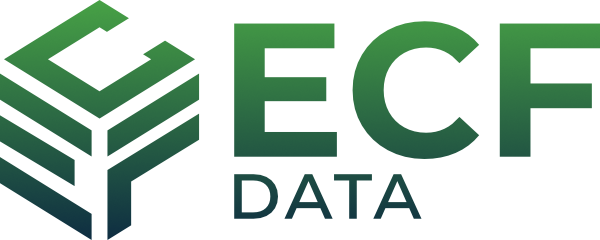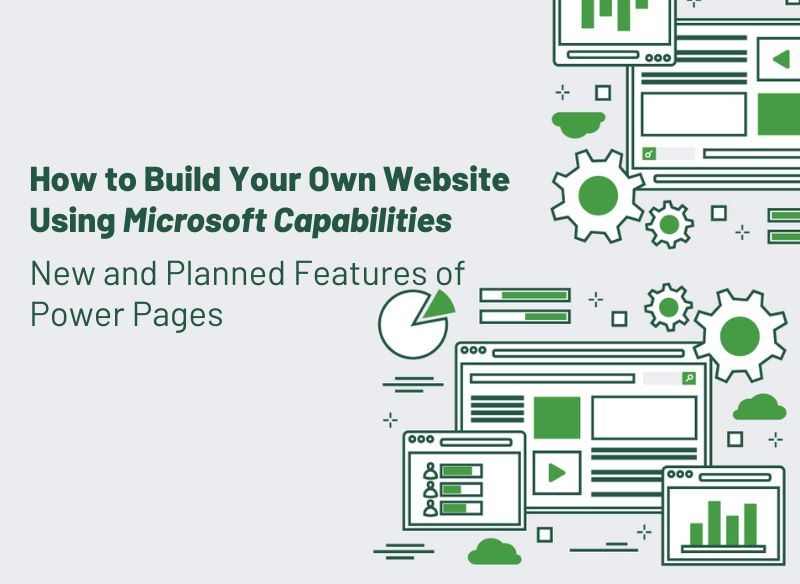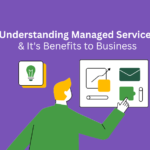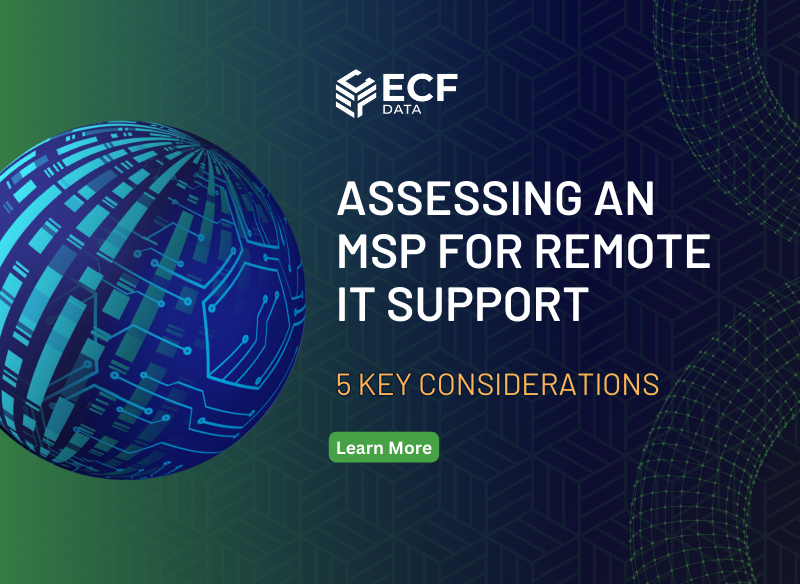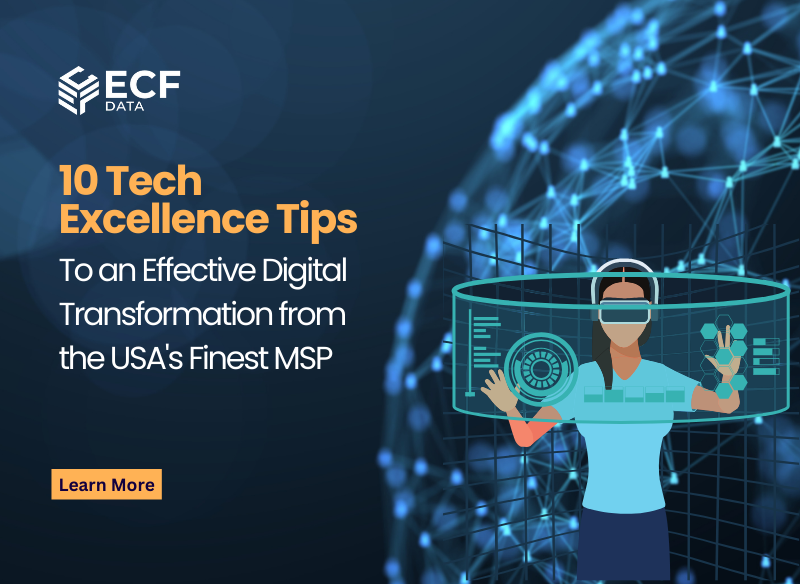-
By: Janina Criador
- IT Consulting, IT Management
- April 11, 2023
- Comments 0
How to Build Your Own Website Using Microsoft Capabilities | New and Planned Features of Power Pages
Let’s face it, building a website can be far too complex for the ordinary person. Thanks to the low-code and no-code revolution, organizations have become equipped to respond to and adapt to rapidly changing business situations swiftly.
Low-code and no-code software development tools gained popularity, particularly for internal tool development within organizations. According to leading research and advisory company Gartner, using low-code or no-code technologies will increase significantly in the coming years. By 2025, it is estimated that 70% of new enterprise applications will be developed using these technologies, up from less than 25% in 2020.
One such tool gaining strides in the market is Microsoft’s Power Pages (formerly known as Power Apps Portal). This innovative platform offers businesses an easy and efficient way to create public-facing websites without requiring extensive technical skills. In this blog post, we’ll explore how you can build your website using Microsoft capabilities and take a closer look at the new and planned features of Power Pages that make it an exciting option for businesses of all sizes. From low-code development to seamless integration with Microsoft 365 ecosystem, we’ll cover everything you need to know about creating stunning websites with Power Pages. Let’s dive in!
What is Microsoft Power Pages ?
Microsoft unveiled Power Apps Portals in 2019, a technology that enables businesses to make their databases accessible to other users securely. Recently, Microsoft announced that Power Apps Portals would be replaced by Microsoft Power Pages, a solution that enables companies to create seamless, secure, low-code websites.
Power Pages and Power Apps Portal: The Differences
- Experience Level – To customize your website and create a good user experience, Power Apps Portals requires at least a basic familiarity with HTML, CCS, JavaScript, or Liquid. Yet, Pages enables your designers to create low-code or no-code websites where coding expertise is helpful but not needed.
- Mobile Preview – To test your site design on a mobile device with PowerApps Portals, you must retype the link. With Power Pages, you can scan a QR code with that device for a more seamless experience.
- Developer Experience – PowerApps Portals only offers a small number of configuration options. Therefore, you must leave the studio to add additional features like identity providers, etc. With Power Pages, everything is a centralized and organized within platform to attain a more seamless and coherent builder experience.
- Time Provisioning – Websites created using Power Apps require much more time to provision than those made using Power Pages.
- Licenses and Microsoft Roles – To construct Power Apps, your site developers must be given the responsibilities of Global, Dynamics 365, or Power Platform administrators. Power Pages, however, needs creators to join a free 30-day trial or avail of an additional
Power Pages and Power Apps Portal: The Similarities
- Power Pages and PowerApps Portals offers the same robust capabilities and pro developer experiences as the original platform but with the added benefit of a new low-code maker experience and templates.
- Users can create externally facing webpages using either platform.
- Creators can use Pro developer tools on their PowerApps Portals and Power Pages sites.
- To enable users to manipulate and save data from various sources, like D365, Power Bi, SharePoint, and others, both builders employ Dataverse as their underlying data structure.
- By utilizing PowerBI, Power Virtual Agents, and Power Automate flows in both Power Apps and Power Pages, both Citizen Developers and Professionals can expand the functionality of their websites.
- These platforms allow creators to customize security, table permissions, and identity providers for their websites to the needs of their organizations.
What’s New in Power Pages?
- The Look
The Power Platform now has a new icon to start, along with introducing its latest product, Power Pages, previously known as Power Portals.
- Template Hub
You can start with a predefined template when building a new webpage. A segment/scenario-based template or the default template are your choices. Choose from 16 new prebuilt templates in Template Hub. The components needed to create an attractive landing page are all included here.
- Learning Hub
The Learn Hub is located in the final section of the Power Pages sitemaps if you are new to designing and building websites. Resources for getting started, designing, creating pages, configuring access, customizing, etc., are available here. Videos and written content contain a wealth of information.
- Improved trial and site-creation processes
A 30-day trial period is available for free with Power Pages. Thanks to this, you’ll have a quick and straightforward way to test Power Pages. Several features in the premium version are also present in the trial environment.
- All-New Design Studio
The design studio is split up into different workplaces that classify the numerous regions and duties involved in developing your website. You have sections like Pages, Style, Data, and Setup (all of which will be discussed in detail below) to make it simple to get the required data.
You always have the option to preview changes that you have made. A Preview button in the top right corner allows you to view the webpage on a desktop or mobile device.
How to Make Your Own Website with Power Pages?
- Visit Power Pages.
- If it’s your first time visiting the site, a Try it for Free button and sign up for a 30-day free trial.
- Choose Microsoft Dataverse Environment where you want to create a site
- Choose Create a Site on the Home page.
- Choose the template from the different options you have on the template page.
- Verify the newly generated default site name and web URL, then click Done.
- After creating the site, you can edit or Preview it.
Using Design Studio
Low-code makers can create and set up rich business web apps using the Power Pages design studio’s simple interface.
- Visit Power Pages.
- Choose the site created and select Edit to launch the Design Studio.
Each of the four work locations in the design studio contributes to the various components development of your website:
- Pages: Includes features such as text, lists, forms, images, and sections
- Styling: Changes the website theme by font, color, section, and button customization.
- Data: Produces Dataverse assets like fields, views, and forms
- Setup: Set up governance components like authentication and table permissions.
Meaning for New and Existing Customers
New Customers
Businesses that add unique customer interaction elements to their websites, such as custom logins, forms, and booking confirmations, do very well with Power Pages. It’s critical to think about the goal of your website because you pay a premium for these features. You might need more than Power Pages to suit you if you only want to provide website content.
Existing Customers
You can access your portal in the new design studio if you already use Power Apps. Power Pages is also included if you currently have a membership to the Power Platform. It lets you try out the newest features without worrying about changing subscriptions.
ECF Data: Power Pages Consultants Within Your Reach
Power Pages is an expansion of PowerApps Portals that provides similar advanced capabilities and developer experiences, but with the added advantage of a new low-code maker experience and pre-designed templates. This makes it simpler for users of all levels to create modern business websites without requiring extensive technical expertise.
ECF Data offers a wide range of industry solutions that support specialized business requirements. Projects from diverse industries (healthcare, education, retail, etc. ) have been managed by our Microsoft Power Pages consulting service team. The services you require will be provided by our knowledgeable consultants.
